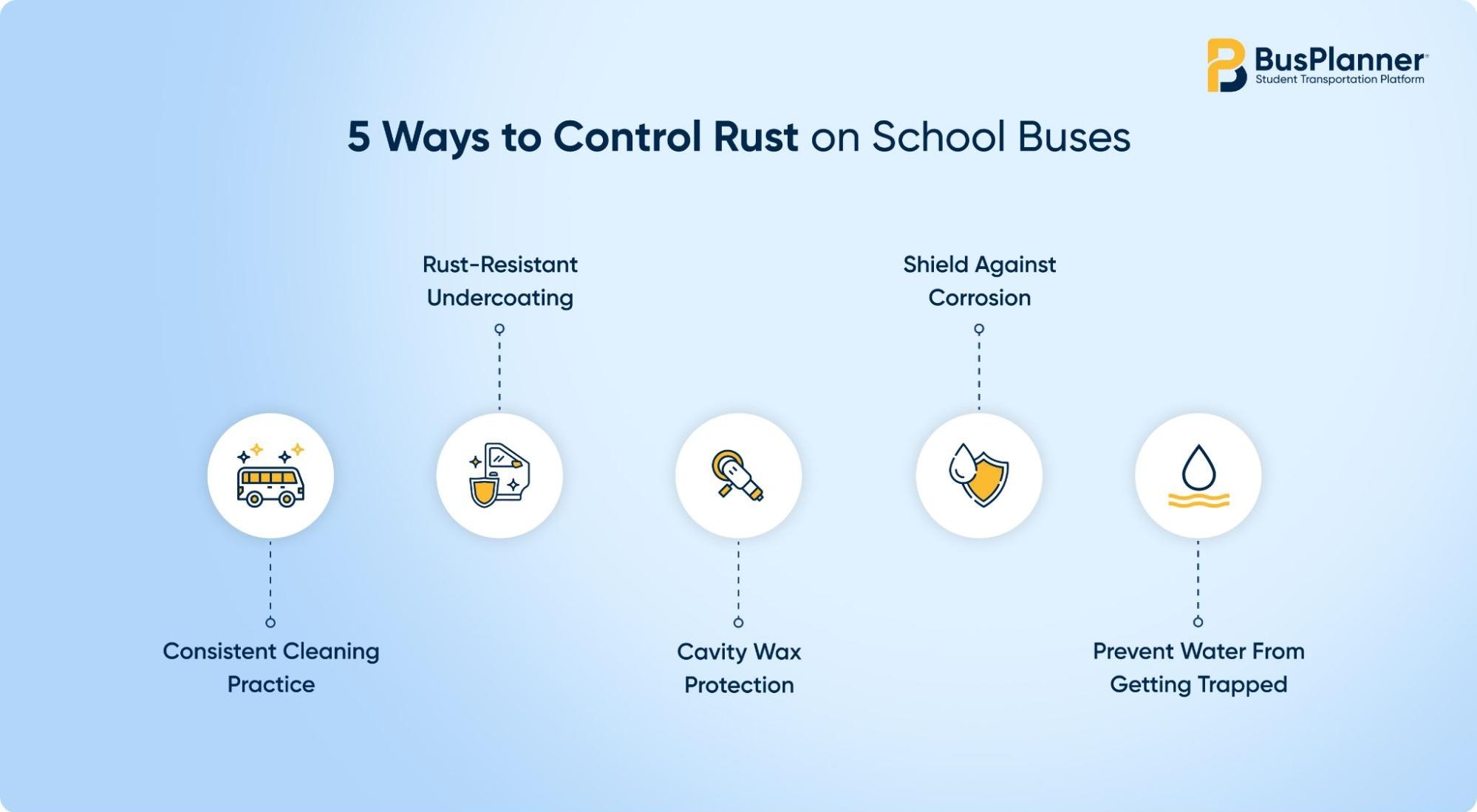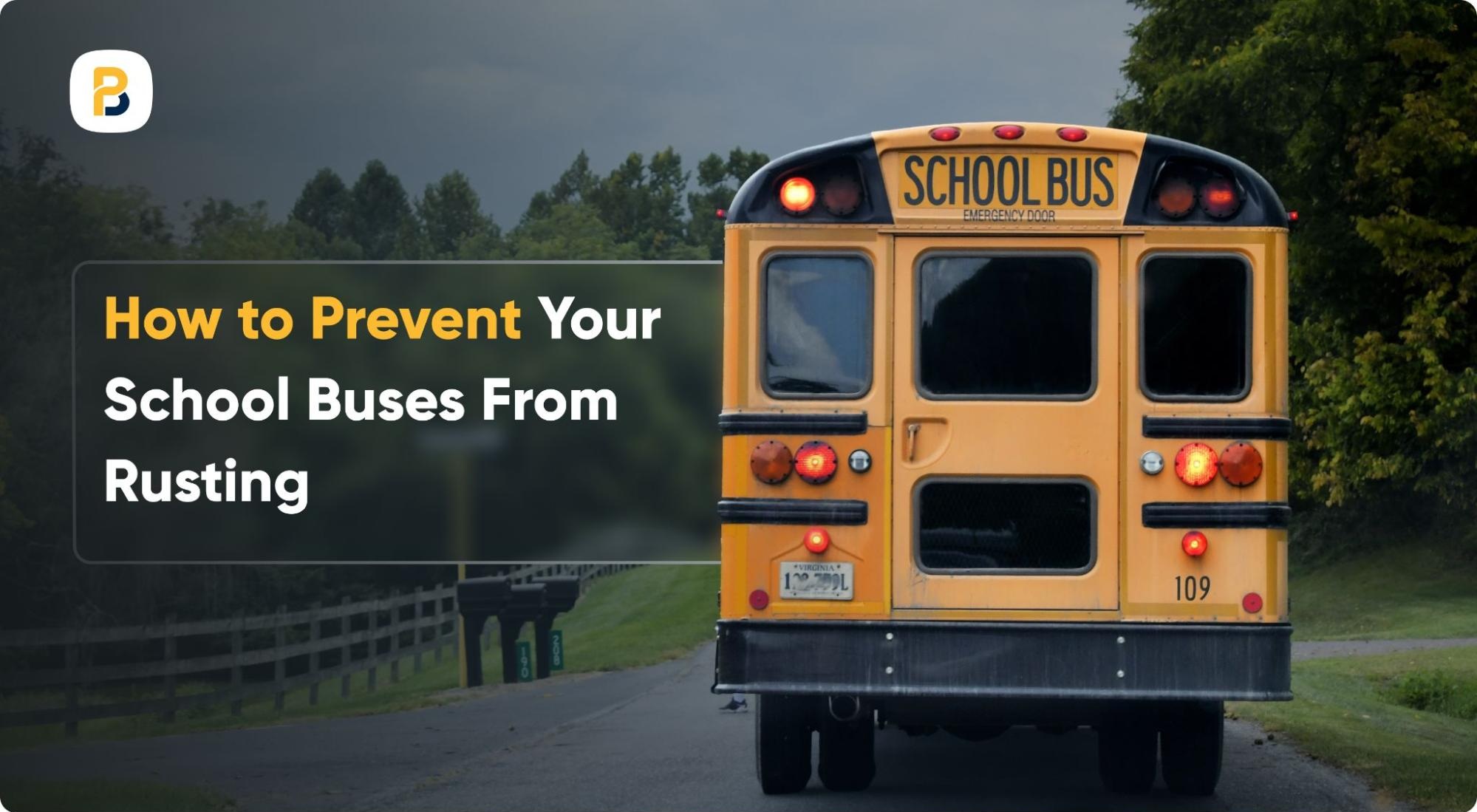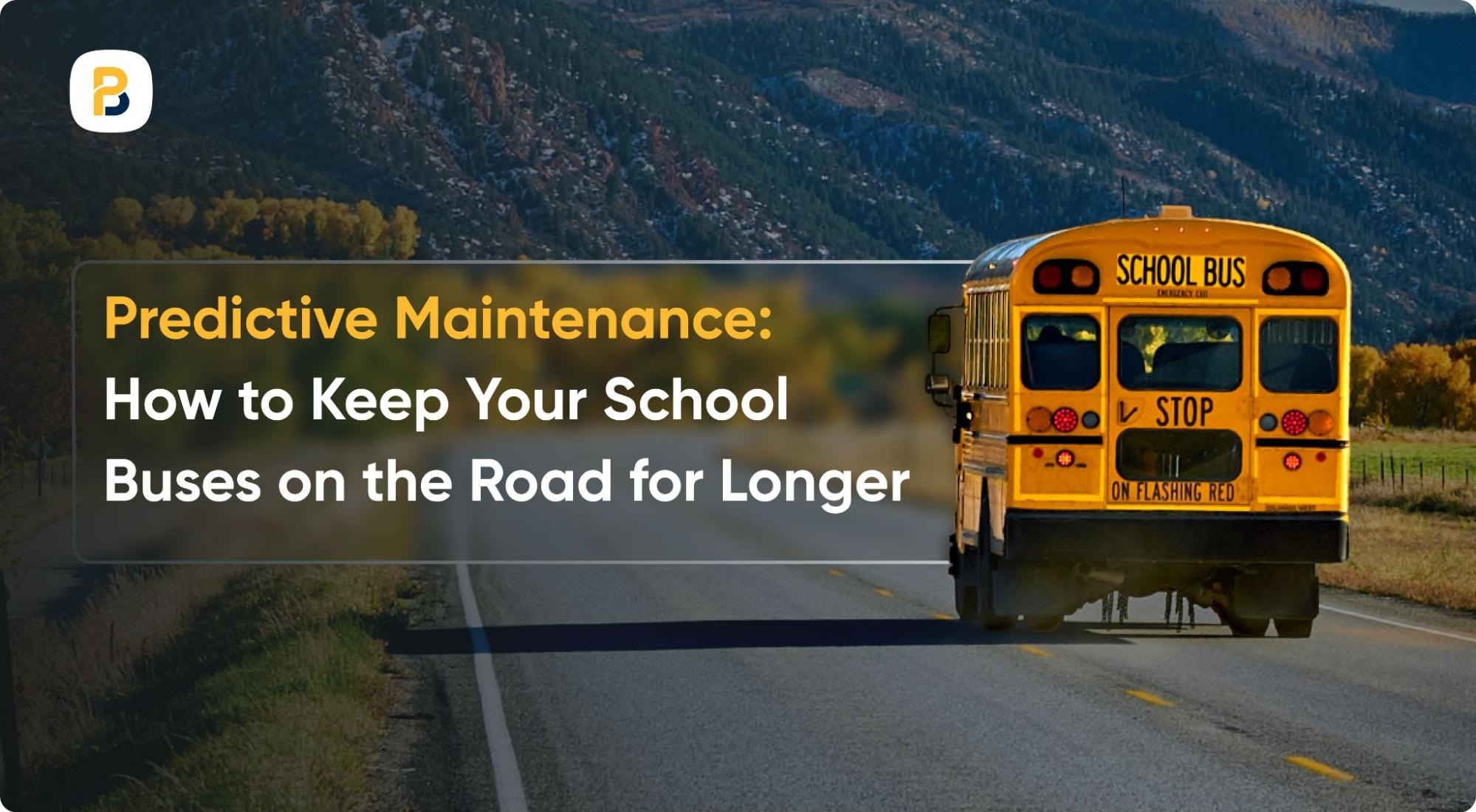Rust is a frequently overlooked yet costly threat to vehicle maintenance. It increases repair expenses and shortens the fleet’s lifespan. Proactive prevention not only protects your school bus but also ensures long-term reliability and safety.
This guide explains why rust occurs, how to identify early warning signs, and which preventive strategies ensure school bus safety.
How Does Rust Form?
Over time, school bus protective coatings deteriorate, exposing metal to moisture and air. This exposure causes rust, a type of corrosion, which accelerates significantly when humidity exceeds 60%.
- Metal Risk: Exposed or aging vehicle parts are highly prone to rust and corrosion.
- Poor Maintenance: Damaged or neglected protective layers accelerate rust if not fixed promptly.
- Environmental Impact: Moisture, road salt, and high humidity significantly speed up metal deterioration.
Signs of Rust
If you notice scratches, dents, or worn paint on your school bus exterior or interior, rust is likely forming and spreading unnoticed, weakening the metal and reducing its durability.
- Surface Discoloration: Over time, orange-brown spots may appear on the outer layer of the bus.
- Metal Flakes: Rust makes metal peel away, gradually exposing the layers beneath the surface.
- Pitting Damage: Tiny holes or indentations become visible on the metal, creating a rough texture.
Ways to Control Rust
Corrosion causes major damage and expense for vehicles, affecting performance and appearance. Now that we understand how it forms and spreads, let’s explore how to prevent your school buses from rusting.

1. Consistent Cleaning Practice
Regular vehicle cleaning is a simple and effective way to prevent corrosion. Washing helps remove salt, grime, and pollutants, maintaining paint quality and exposing early damage for efficient inspections. Ensure that you clean the undercarriage thoroughly to prevent moisture and salt buildup on metal surfaces.
2. Rust-Resistant Undercoating
A durable undercoating protects the lower body of the school bus from water, dirt, and chemicals, minimizing damage and preventing corrosion. Professional-grade coatings create a flexible barrier that withstands vibration and temperature changes. Regular reapplication during maintenance ensures lasting protection, extends durability, and reduces upkeep costs.
3. Cavity Wax Protection
Rust protection in hard-to-reach areas such as door frames, joints, and internal panels is achieved through cavity wax. It seals hidden spaces, blocking moisture where regular wax coatings fall short. Advanced formulations deliver lasting flexibility and coverage, ensuring internal components stay protected and the bus structure remains strong over time.
4. Shield Against Corrosion
High-quality corrosion inhibitors preserve metal strength by shielding surfaces from moisture and road salt. These treatments maintain the coating’s integrity and durability in all conditions. Adding corrosion-preventive products like inhibitors to regular maintenance lowers repair costs, reduces downtime, and improves performance and resale value.
5. Prevent Water From Getting Trapped
Ensure your school bus dries completely after washing or rainfall. Moisture trapped in joints, seams, or wheel wells speeds up corrosion. Parking in well-ventilated areas helps hidden water evaporate and keeps metal surfaces dry. Focusing on these high-moisture spots helps prevent rust and extend the vehicle’s lifespan.
Proactive Vehicle Maintenance is a Smart Investment
Keeping school buses rust-free starts with regular checks. Early detection and timely maintenance prevent minor corrosion from becoming expensive repairs. A well-maintained bus fleet operates more efficiently and provides safer transportation for students.







